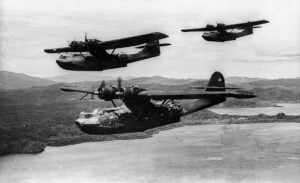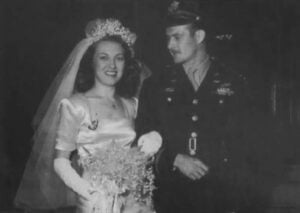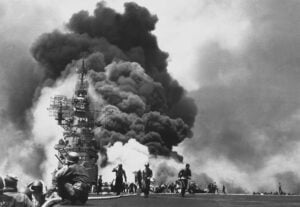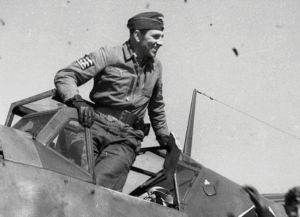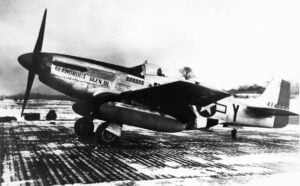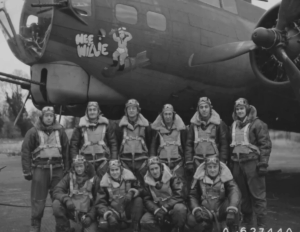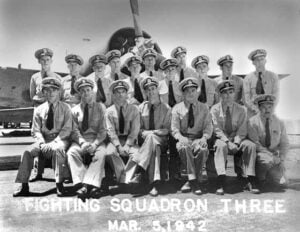The Super-Fighter That Was Betrayed By Its Engine
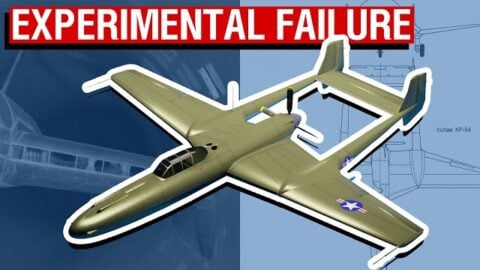
YouTube / Rex's Hangar
During the 1940s, American engineers were racing to redefine the future of air combat. Among the boldest results of that ambition was the Vultee XP-54, unofficially nicknamed the “Swoose Goose.” The XP-54 was born from the same ambitious Army Air Corps program that produced experimental oddities like the Bell XP-52, Curtiss XP-55, and Northrop XP-56. It was a daring leap into the unknown, a fighter designed to push the limits of aeronautical innovation.
Origins
The origins of the XP-54 trace back to November 1939, when the United States Army Air Corps (USAAC) issued Specification R-40C. It was a daring request for a new generation of fighter aircraft. The goal wasn’t just to create a faster or more agile plane, but to design one that would redefine air combat. The specification called for exceptional speed, handling, and pilot visibility. It also encourages bold experimentation and unconventional design approaches to keep the U.S. at the forefront of aviation technology.
Three major manufacturers, Curtiss-Wright, Northrop, and the Vultee Aircraft Corporation, submitted proposals in response. Of the three, Vultee’s design impressed the most. In 1941, the company was awarded a contract to develop a prototype that embodied this forward-thinking vision for the future of American fighter aircraft.
Design
Vultee moved forward with its finalized design, retaining the distinctive twin-boom tail and swept-wing layout. The aircraft was officially designated the XP-54 and soon earned the nickname “Swoose Goose.” The name was inspired by the 1941 song “Alexander Was a Swoose,” which told the tale of a man who was half-human, half-goose, an apt metaphor for the aircraft’s unconventional appearance.
Seeking to enhance performance and survivability, Vultee equipped the XP-54 with protective armor and self-sealing fuel tanks. These features would later become standard on wartime aircraft but were considered forward-thinking innovations at the time. However, despite its ambitious design, the XP-54 encountered numerous technical setbacks during development. Its highly swept wings posed control challenges, and the aircraft suffered from persistent stability issues at higher speeds, hindering its progress from prototype to production.
Setbacks
Vultee also proposed an innovative armament system for the XP-54, six Browning machine guns mounted on pivoting mechanisms that would allow the pilot to strafe targets while maintaining level flight. Though clever in concept, test evaluations revealed major drawbacks: the aiming system was overly complex, difficult to use effectively in combat, and added unnecessary weight to an already heavy aircraft.
Complications continued when Pratt & Whitney canceled development of the X-1800 engine originally intended for the XP-54. In its place, Vultee installed the untested Lycoming XH-2474 engine, a liquid-cooled powerplant producing 2,300 horsepower. While powerful, the Lycoming engine was significantly heavier than expected, forcing Vultee to redesign portions of the airframe to compensate for the added mass.
To improve high-altitude performance and offset the weight penalty, engineers equipped the XP-54 with a turbo-supercharger system. This required a pressurized cockpit, which again increased the aircraft’s weight. The advanced supercharger also demanded intensive maintenance, further complicating the program. Despite these ongoing challenges, the U.S. Army Air Force maintained interest. In March 1942, they ordered a second prototype and redefined the XP-54’s role, shifting its mission from a standard fighter to a high-altitude interceptor designed to exploit its speed and power at extreme altitudes.
End of the Project
The second XP-54 prototype made its first flight in May 1944 at Norton Army Air Force Base. It flew only ten times before suffering the same fate as the first, a catastrophic engine failure that ended testing.
By then, newer and proven fighters like the P-51 Mustang and P-47 Thunderbolt were already dominating the skies. This left little reason to continue developing the troubled XP-54. The project was soon canceled, marking the end of Vultee’s bold but unsuccessful experiment. Still, the XP-54 “Swoose Goose” remains a fascinating example of wartime innovation and the risks of pushing aircraft design too far, too fast.














